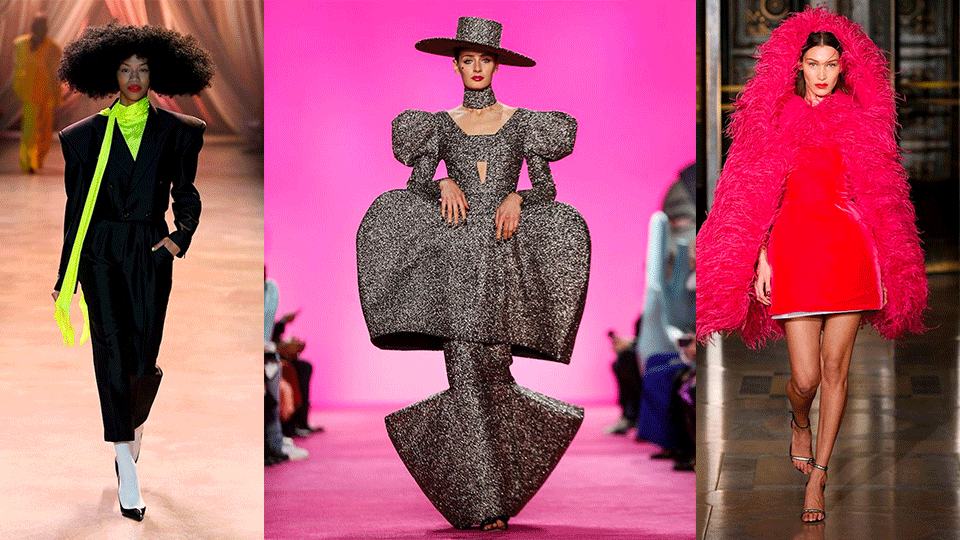- À New Wave to Fashion, À New Way of Living. Download Now on iOS Android Canada SS22
- hello@alahausse.ca
UK’s Dedication to being a Sustainable Fashion Leader

The Gateway for Fashion in Metaverse: Roblox
November 23, 2022
Thinking Outside the Box: Staying Sustainable During this Holiday Season
December 5, 2022
Written by: Nadim Kassymov
The fashion market of the United Kingdom is one of the largest in the world, contributing to the country’s GDP pre-pandemic of £35 billion through its revenues of £118 billion made possible by over 890,000 workers. The country has become one of the leaders in the industry, constantly promoting a new outlook on fashion while supplying the globe with new pieces. Although the fashion scene is booming, it does not largely address huge sustainability issues within – as UK’s current fashion supply chain produces massive amounts of waste, with its 4 billion pieces of 2019-made apparel facing a high percentage of going to landfill.
Promoting sustainability across the country, the British Fashion Council (BFC) wants to again revolutionize the fashion world, but in a green, eco-friendly way that will set precedent not only for the country but the world. A recent news report from the BFC sets out new circular economy strategies, creating goals with a determined spirit to make UK’s fashion scene round.
Out with the Dull, in With the Green

The vision for Circular Fashion Ecosystems from the BFC is a part of its 2020-created Institute of Positive Fashion (IPF), in partnership with Circular Economy – an Amsterdam-located non-profit – planning to double the country’s circularity by 2023. Just as much as sustainable fashion is about sharing, so is the BFC with the sharing of knowledge and addressing the concerns through various workshops with vital stakeholders, alongside partnerships with local governments to begin the construction of needed infrastructure – developing many fashion ecosystems across the UK.
The blueprint will begin with the cities of Leeds and London, using the concept of “Doughnut Economics” at a city level, gradually using the power of scale to grow these fashion economies to other cities in the country, then potentially the world. London has already seemingly begun adapting to various sustainable fashion practices such as renting, rebuying, and upcycling; but the BFC seeks to understand the impact of economies with the balance of the environment. Leeds was chosen due to its industry-focused sector, with clothing reusability being a big focus on current sustainable initiatives in the city.
10 Priority Actions
In IPF’s Circular Fashion Ecosystem report, the institute outlines 10 key priority actions that need to be taken in order to ensure the BFC meets the needed targets, creating a circular fashion ecosystem for fashion across the country. As stated directly in the official report they are as follows:

Circular Design: The UK needs designers and manufacturers to create items for circularity, using recycled, recyclable and renewable inputs and technology that minimises material use.
Consumer Empowerment: The UK needs to empower consumers to make less environmentally impactful purchasing choices, value clothes, and make circular behaviours mainstream.
Circular And Sharing Business Models: The UK needs brands and retailers to shift to circular and sharing business models, allowing brands to profit from maximised use rather than consumption.
Demand For Recycled And Renewable Fibres: The UK needs brands, retailers, and consumers to drive demand for recycled and more renewable fibres.
Enhanced Identification And Tracking: The UK needs designers, product teams, technology and logistics providers, and resellers to co-develop and implement identification methods and tracking that facilitate sorting for resale and regenerative recycling.
Post-Use Ecosystem: The UK needs to facilitate an integrated and cost- effective ecosystem of operations post-use.
Sortation And Recycling: The UK needs to demonstrate the value of and drive investment in efficient textiles sorting facilities and phased scaling of open-loop, closed-loop, and regenerative recycling.
Ecosystem Modelling: The UK needs dedicated research and a collaborative initiative aimed at mapping out the envisaged future flows of materials and involved actors and economic case for an ecosystem shift to regenerative recycling.
Policy And Regulation: The UK needs to drive support and dialogue for effective EPR consultation and development, exploration of preferential incentives, and development of standards for labels and feedstock.
Innovation Investment: The UK needs to drive investment in circular businesses, enabling logistics and platform providers, the economy for maintenance, repair, and resale of clothes, efficient sorting facilities, and open-loop, closed-loop, and regenerative recycling.
The Doughnut Ecosystem
Introduced by Kate Raworth in 2012, a British economist, the Doughnut Economic Model challenges the plausibility of human needs when coinciding with environmental preservation. It questions how to limit the need for limited eco-resources with an exceeding means from humans.
When visualized the model consists of two main rings making a doughnut shape, on the inner rings lies the foundation of human needs as developed by the UN’s sustainable development goals – listing basic needs such as water, food, health, and education. On the outer, second ring of nine environmentally-induced boundaries including climate change, chemical pollution, and ocean acidification. The layer beyond the second ring lies complete, instructable environmental destruction.
Senior strategist at Circle Economy, Ilektra Kouloumpi discusses the Doughnut Economic Model and its impact on a sustainable fashion ecosystem, “Doughnut Economics combines the local context of a city with its global impacts […] It’s a whole new way of designing and creating a vision, bringing together elements for what makes people thrive here with livelihoods elsewhere, and environmental impacts here and elsewhere.”


A New Future
The BFC’s report commands exponential growth in sustainable practices in the UK’s fashion industry that can serve as a blueprint for global economies, bridging together an overlapping circular ecosystem for the betterment of the environment and the longevity of fashion. The report states that there is much work to be done, including improving accessibility and transparency in the ecosystem, with the crucial need for coordination and further research.
ÀLA.HAUSSE applauds this transition into micro-focusing on sustainability in fashion, as our views deeply align with the need for a circular fashion industry where fashion, creativity, technology, and sustainability all coincide.
À New Wave to Fashion. À New Way of Living.
Your First and Last Sustainable AI and Social Powered P2P/B2C Multifunctional Ecosystem (BUY/SELL/RENT/LEND/ SWAP/GIFT), for Me and You.
Apple: https://apple.co/3F8EgcJ
Android: https://bit.ly/3f7jEY3
Via ÀLA.HAUSSE’s Multi-functional and Multi-purposeful Fashion Ecosystem- BUY/SELL/RENT/LEND mobile application, INDIVIDUALS & brands ( BETA) are encouraged to REBUY, RESELL, REUSE and UP-CYCLE their personal “Clossets” aka Clothing Assets. Through this consumerism habit shift we slow down the urgency on fashion carbon footprint, aiding sustainability as a whole.
Launching NOW on iOS Android Canada
Give me a read: shorturl.at/rIMT8
More stories on www.alahausse.ca, Medium & Hackernoon. Follow & Tag @ala.hausse
#ALAHAUSSE #WEARYOURPURPOSE #HAUSSEPEOPLE
References:
- https://instituteofpositivefashion.com/Circular-Fashion-Ecosystem
- https://www.voguebusiness.com/sustainability/the-uk-has-a-plan-to-create-a-circular-fashion-ecosystem-bfc
- https://www.britishfashioncouncil.co.uk/Institute-of-Positive-Fashion/Positive-Fashion-Timeline
- https://fashionunited.uk/news/business/bfc-unveils-blueprint-for-a-circular-fashion-economy/2021092257852







